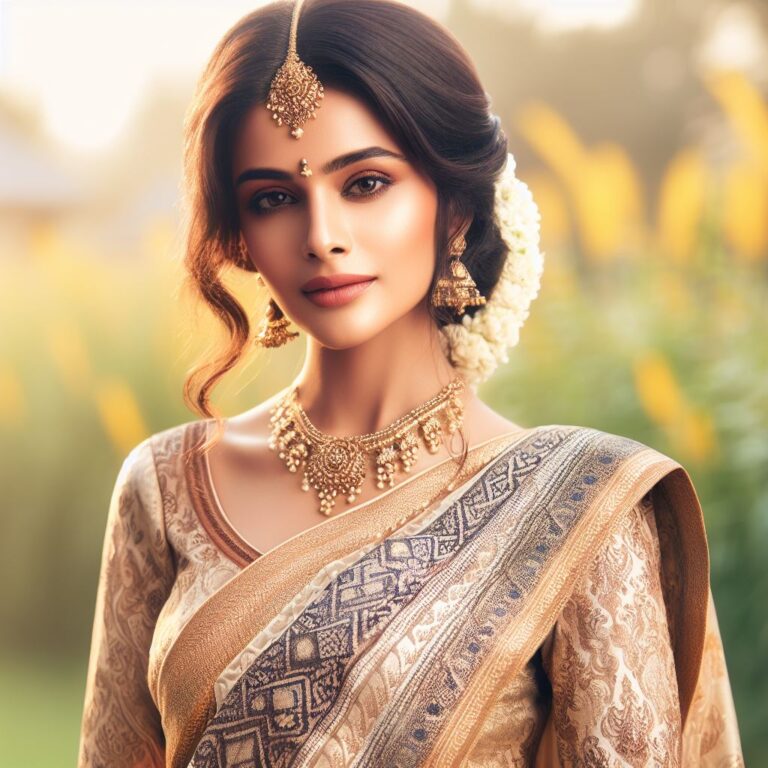Chanderi weaving, a craft rooted in the heart of India, is renowned for its delicate texture, sheer fabric, and intricate designs.
Originating from the town of Chanderi in Madhya Pradesh, this ancient art form has woven its way into the cultural fabric of the country.
In this article, we explore the enchanting world of Chanderi weaving, delving into its history, techniques, motifs, and the enduring legacy it carries in the realm of Indian textiles.
Table of Contents
Historical Roots and Cultural Significance
Chanderi weaving can be traced back to the 8th century when it was patronized by royal families and nobility.
Over the centuries, it has been influenced by various dynasties, resulting in a unique blend of craftsmanship and artistic finesse.
Traditionally, Chanderi fabrics were favored by royalty and aristocracy, symbolizing elegance and grace. Today, these textiles continue to be revered for their timeless appeal and luxurious feel.
Techniques and Materials
Chanderi weaving is characterized by its lightweight and sheer texture, achieved by blending silk with cotton or fine silk threads.
The process involves traditional handloom weaving, where artisans intricately interlace the threads to create the fabric.
What sets Chanderi apart is the use of additional zari (metallic thread) work, which adds a touch of opulence to the textiles.
The intricate motifs, often inspired by nature, mythology, and Mughal art, are woven with precision and finesse.
Types of Chanderi Fabrics
Chanderi fabrics come in various types, each with its unique characteristics:
- Chanderi Silk: Pure silk Chanderi fabric is lightweight, soft, and lustrous, making it ideal for sarees and other traditional garments.
- Chanderi Cotton: Blending cotton with silk results in a comfortable and breathable fabric, perfect for everyday wear and summer outfits.
- Chanderi Silk Cotton: This blend offers the best of both worlds, combining the sheen of silk with the comfort of cotton, making it versatile for different occasions.
Intricate Motifs and Designs
Chanderi textiles are adorned with exquisite designs and motifs. Common patterns include peacocks, flowers, geometric shapes, and traditional coin motifs.
The use of zari work adds a touch of glamour, enhancing the overall allure of the fabric. These designs are meticulously woven, reflecting the skill and artistry of Chanderi weavers.
Learning the Art of Chanderi Weaving
Mastering the art of Chanderi weaving requires dedication, patience, and a keen eye for detail. Here’s how you can embark on your journey to learn this revered craft:
1. Understand the Heritage:
- Familiarize yourself with the history, significance, and cultural heritage of Chanderi weaving. Understanding the context will deepen your appreciation for the craft.
2. Learn the Basics of Weaving:
- Begin by learning the fundamentals of handloom weaving, including warp and weft, shuttle techniques, and different weaving patterns.
3. Practice on a Handloom:
- Practice weaving on a handloom to understand the intricacies of Chanderi weaving. Start with simple patterns and gradually progress to more complex designs.
4. Explore Zari Work:
- Study the techniques of incorporating zari threads into the fabric. Practice adding zari accents to your woven samples, mastering the art of metallic threadwork.
5. Experiment with Designs:
- Experiment with different motifs, patterns, and color combinations. Develop your unique style by blending traditional Chanderi designs with your creative ideas.
6. Attend Workshops and Classes:
- Enroll in Chanderi weaving workshops or classes conducted by experienced artisans. Hands-on guidance and feedback from experts can significantly enhance your skills.
7. Study Traditional Motifs:
- Study traditional Chanderi motifs and designs. Practice replicating these patterns to develop your proficiency in recreating authentic Chanderi designs.
8. Document Your Progress:
- Keep a record of your Chanderi weaving projects, including the techniques used, challenges faced, and successful outcomes. Documenting your progress helps track your improvement and serves as a reference for future projects.
Chanderi weaving, with its rich history and intricate artistry, continues to captivate textile enthusiasts and designers globally.
Learning this ancient craft not only preserves a valuable cultural tradition but also allows artisans to express their creativity and innovation.
As you embark on your journey to master Chanderi weaving, embrace the artistic process, celebrate the heritage, and let the threads of tradition weave through your creations, adding a touch of timeless elegance to the world of textiles.


0 Comments